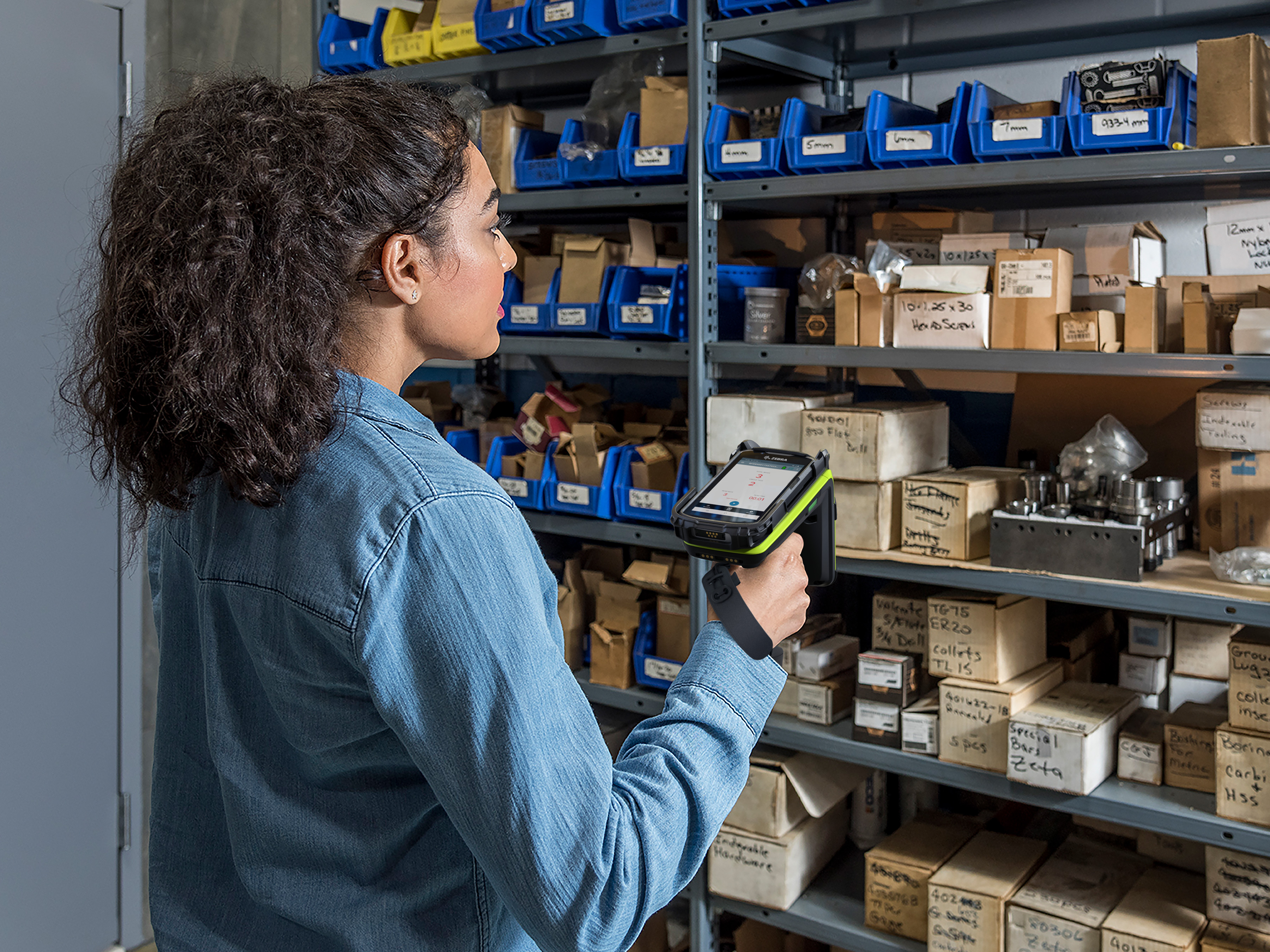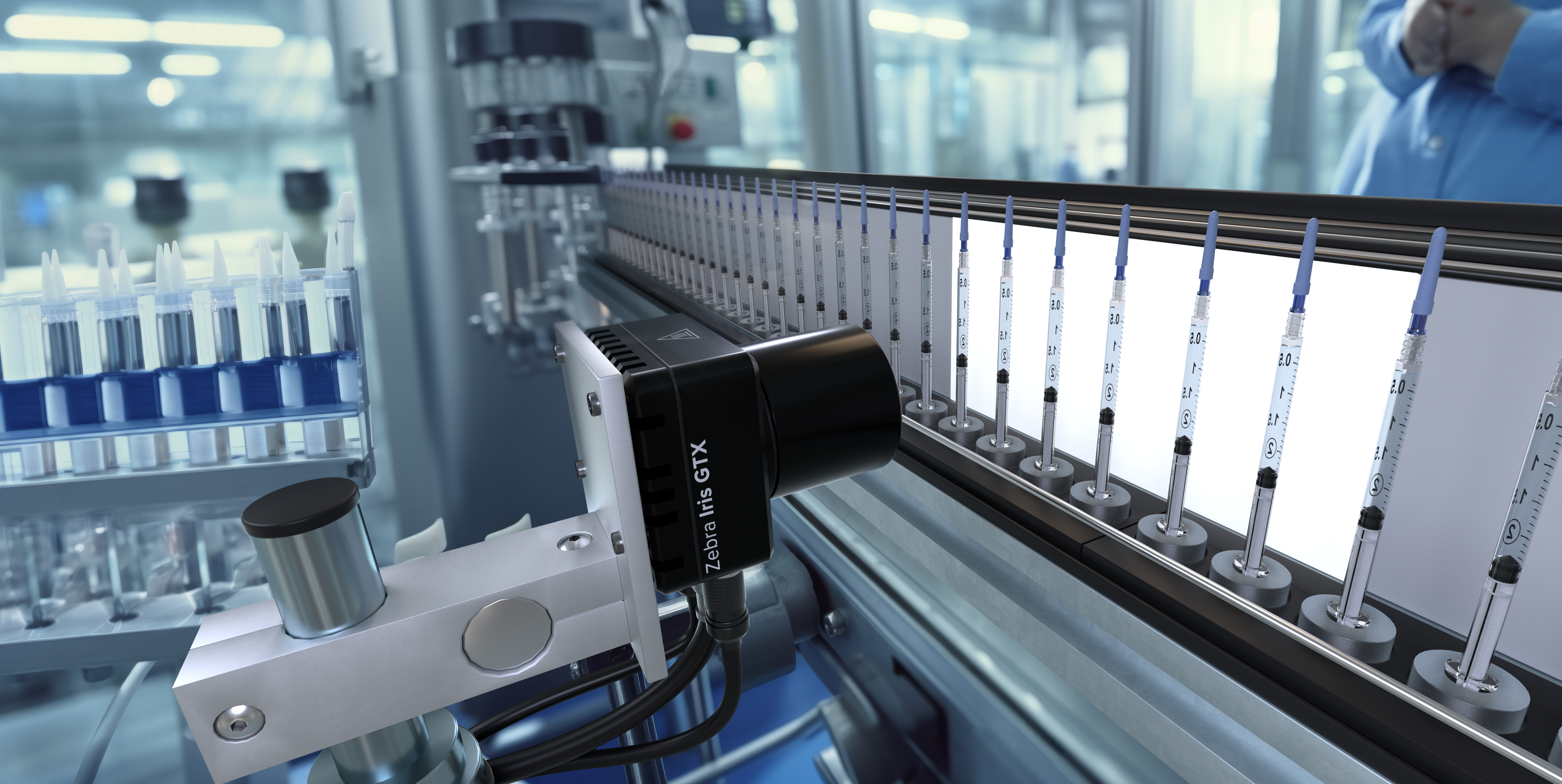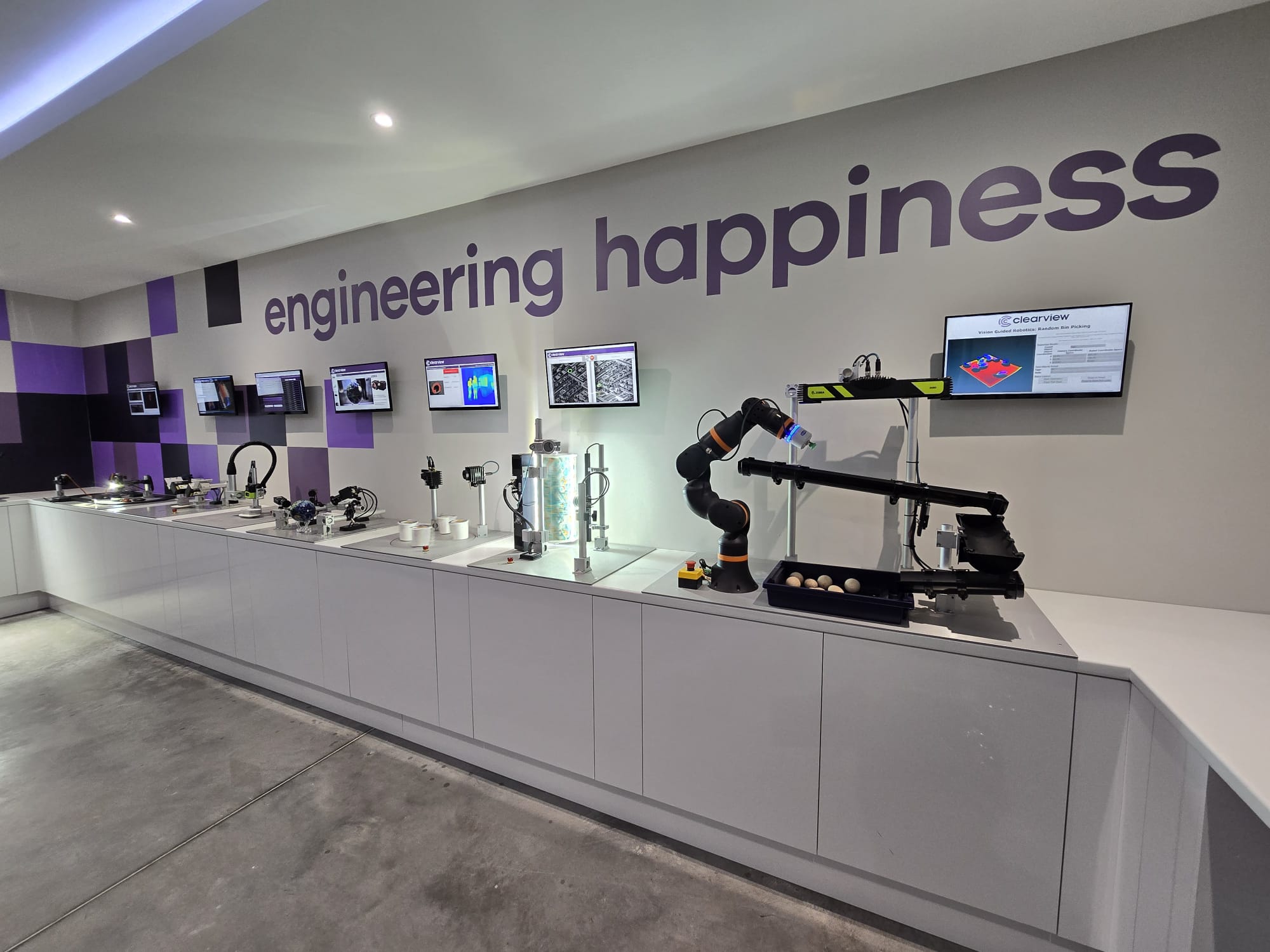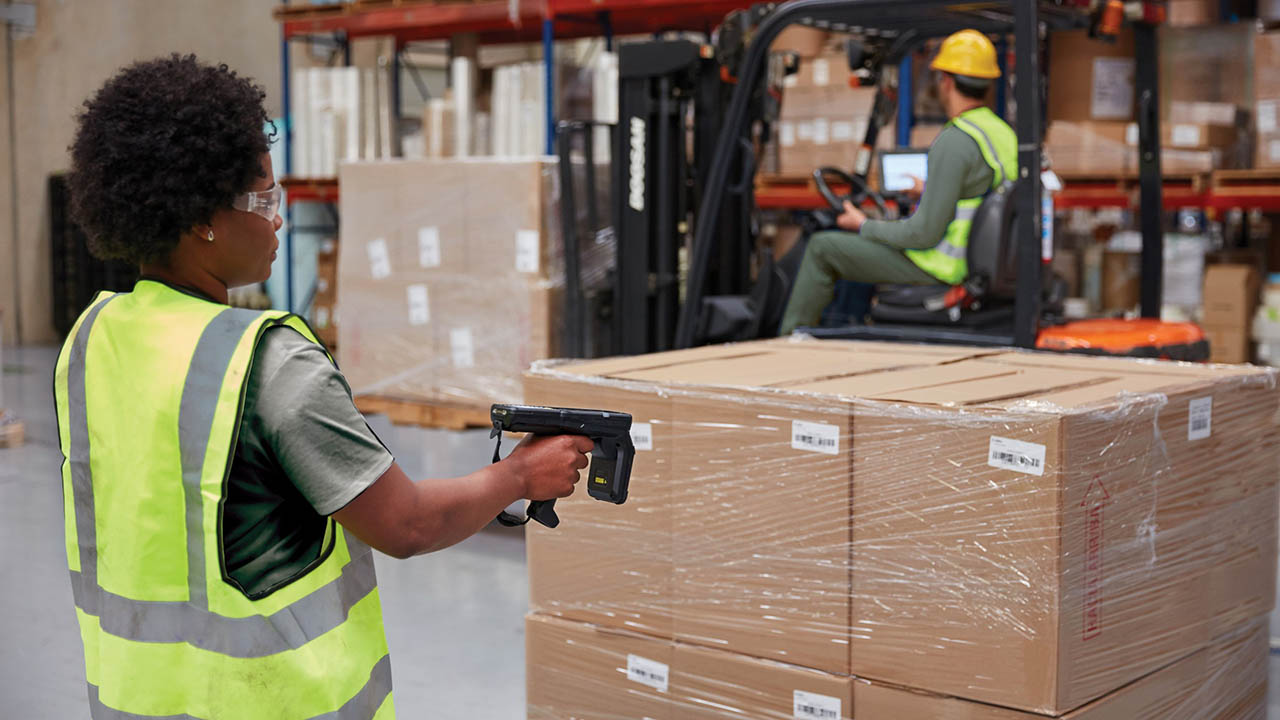Transform retail operations with Zebra’s retail technology solutions, featuring hardware and software for improving inventory management and empowering teams.
Streamline operations with Zebra’s healthcare technology solutions, featuring hardware and software to improve staff collaboration and optimize workflows.
Enhance processes with Zebra’s manufacturing technology solutions, featuring hardware and software for automation, data analysis, and factory connectivity.
Zebra’s transportation and logistics technology solutions feature hardware and software for enhancing route planning, visibility, and automating processes.
Learn how Zebra's public sector technology solutions empower state and local governments to improve efficiency with asset tracking and data capture devices.
Zebra's hospitality technology solutions equip your hotel and restaurant staff to deliver superior customer and guest service through inventory tracking and more.
Zebra's market-leading solutions and products improve customer satisfaction with a lower cost per interaction by keeping service representatives connected with colleagues, customers, management and the tools they use to satisfy customers across the supply chain.
Empower your field workers with purpose-driven mobile technology solutions to help them capture and share critical data in any environment.
Zebra's range of Banking technology solutions enables banks to minimize costs and to increase revenue throughout their branch network. Learn more.
Zebra's range of mobile computers equip your workforce with the devices they need from handhelds and tablets to wearables and vehicle-mounted computers.
Zebra's desktop, mobile, industrial, and portable printers for barcode labels, receipts, RFID tags and cards give you smarter ways to track and manage assets.
Zebra's 1D and 2D corded and cordless barcode scanners anticipate any scanning challenge in a variety of environments, whether retail, healthcare, T&L or manufacturing.
Zebra's extensive range of RAIN RFID readers, antennas, and printers give you consistent and accurate tracking.
Choose Zebra's reliable barcode, RFID and card supplies carefully selected to ensure high performance, print quality, durability and readability.
Zebra's location technologies provide real-time tracking for your organization to better manage and optimize your critical assets and create more efficient workflows.
Zebra's rugged tablets and 2-in-1 laptops are thin and lightweight, yet rugged to work wherever you do on familiar and easy-to-use Windows or Android OS.
With Zebra's family of fixed industrial scanners and machine vision technologies, you can tailor your solutions to your environment and applications.
Zebra’s line of kiosks can meet any self-service or digital signage need, from checking prices and stock on an in-aisle store kiosk to fully-featured kiosks that can be deployed on the wall, counter, desktop or floor in a retail store, hotel, airport check-in gate, physician’s office, local government office and more.
Adapt to market shifts, enhance worker productivity and secure long-term growth with AMRs. Deploy, redeploy and optimize autonomous mobile robots with ease.
Discover Zebra’s range of accessories from chargers, communication cables to cases to help you customize your mobile device for optimal efficiency.
Zebra's environmental sensors monitor temperature-sensitive products, offering data insights on environmental conditions across industry applications.
Enhance frontline operations with Zebra’s AI software solutions, which optimize workflows, streamline processes, and simplify tasks for improved business outcomes.
Zebra Workcloud, enterprise software solutions boost efficiency, cut costs, improve inventory management, simplify communication and optimize resources.
Keep labor costs low, your talent happy and your organization compliant. Create an agile operation that can navigate unexpected schedule changes and customer demand to drive sales, satisfy customers and improve your bottom line.
Drive successful enterprise collaboration with prioritized task notifications and improved communication capabilities for easier team collaboration.
Get full visibility of your inventory and automatically pinpoint leaks across all channels.
Reduce uncertainty when you anticipate market volatility. Predict, plan and stay agile to align inventory with shifting demand.
Drive down costs while driving up employee, security, and network performance with software designed to enhance Zebra's wireless infrastructure and mobile solutions.
Explore Zebra’s printer software to integrate, manage and monitor printers easily, maximizing IT resources and minimizing down time.
Make the most of every stage of your scanning journey from deployment to optimization. Zebra's barcode scanner software lets you keep devices current and adapt them to your business needs for a stronger ROI across the full lifecycle.
RFID development, demonstration and production software and utilities help you build and manage your RFID deployments more efficiently.
RFID development, demonstration and production software and utilities help you build and manage your RFID deployments more efficiently.
Zebra DNA is the industry’s broadest suite of enterprise software that delivers an ideal experience for all during the entire lifetime of every Zebra device.
Advance your digital transformation and execute your strategic plans with the help of the right location and tracking technology.
Boost warehouse and manufacturing operations with Symmetry, an AMR software for fleet management of Autonomous Mobile Robots and streamlined automation workflows.
The Zebra Aurora suite of machine vision software enables users to solve their track-and-trace, vision inspection and industrial automation needs.
Zebra Aurora Focus brings a new level of simplicity to controlling enterprise-wide manufacturing and logistics automation solutions. With this powerful interface, it’s easy to set up, deploy and run Zebra’s Fixed Industrial Scanners and Machine Vision Smart Cameras, eliminating the need for different tools and reducing training and deployment time.
Aurora Imaging Library™, formerly Matrox Imaging Library, machine-vision software development kit (SDK) has a deep collection of tools for image capture, processing, analysis, annotation, display, and archiving. Code-level customization starts here.
Aurora Design Assistant™, formerly Matrox Design Assistant, integrated development environment (IDE) is a flowchart-based platform for building machine vision applications, with templates to speed up development and bring solutions online quicker.
Designed for experienced programmers proficient in vision applications, Aurora Vision Library provides the same sophisticated functionality as our Aurora Vision Studio software but presented in programming language.
Aurora Vision Studio, an image processing software for machine & computer vision engineers, allows quick creation, integration & monitoring of powerful OEM vision applications.
Adding innovative tech is critical to your success, but it can be complex and disruptive. Professional Services help you accelerate adoption, and maximize productivity without affecting your workflows, business processes and finances.
Zebra's Managed Service delivers worry-free device management to ensure ultimate uptime for your Zebra Mobile Computers and Printers via dedicated experts.
Find ways you can contact Zebra Technologies’ Support, including Email and Chat, ask a technical question or initiate a Repair Request.
Zebra's Circular Economy Program helps you manage today’s challenges and plan for tomorrow with smart solutions that are good for your budget and the environment.
The Zebra Knowledge Center provides learning expertise that can be tailored to meet the specific needs of your environment.
Zebra has a wide variety of courses to train you and your staff, ranging from scheduled sessions to remote offerings as well as custom tailored to your specific needs.
Build your reputation with Zebra's certification offerings. Zebra offers a variety of options that can help you progress your career path forward.
Build your reputation with Zebra's certification offerings. Zebra offers a variety of options that can help you progress your career path forward.
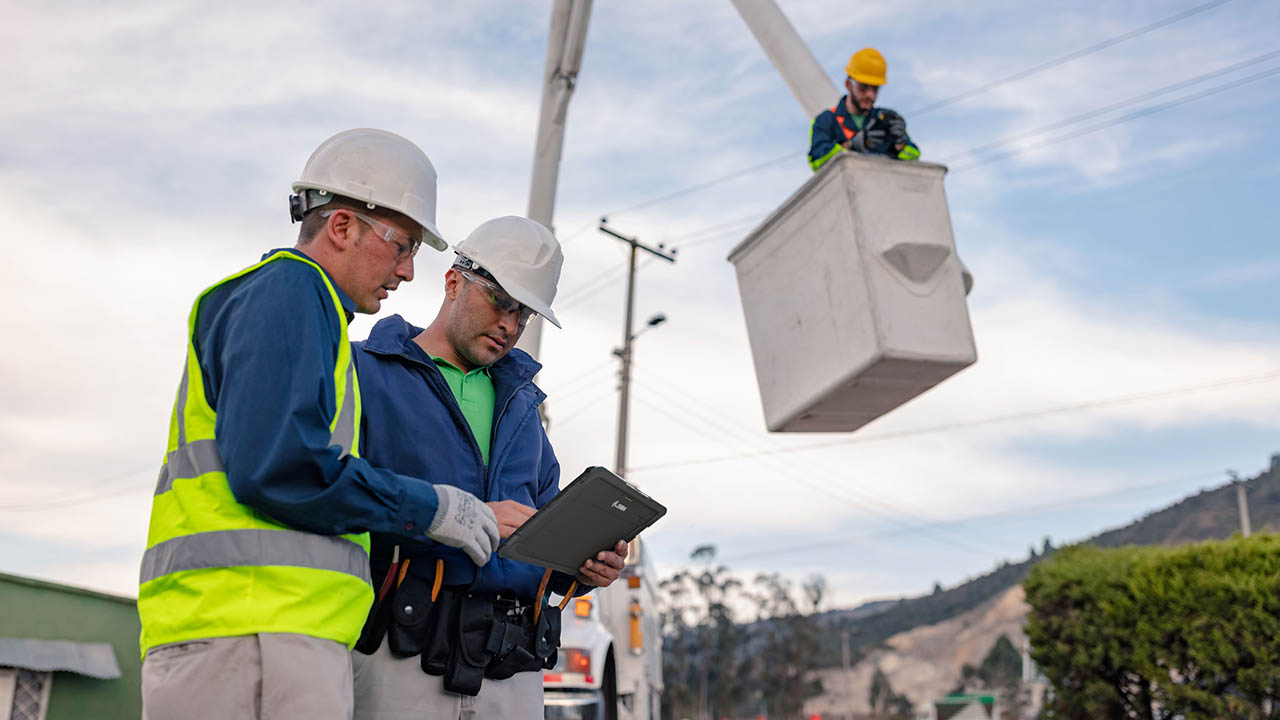
Ask the Expert: Should I Upgrade My Workers to 5G Devices in 2021? And, If Not Now, When?
5G adoption continues to accelerate, with some analysts predicting worldwide 5G smartphone adoption to account for 43% of the global market by the end of 2021. This may have you asking: “Is now the right time to buy 5G devices for my workers? And, if not now, when?”
So, we invited Zebra technology solutions engineering fellow and “what’s next in wireless” guru Bruce Willins back to talk this through a bit more:
Your Edge Blog Team: It’s been five months to the day since we last spoke about the state of 5G. At that time, you said that “it’s going to take a long time for full 5G capabilities to become pervasive.” By some measures, five months is considered a long time. So, can you help put in perspective where we are today in terms of getting the full value of 5G? Do we need to temper expectations?
Bruce: The scope of “5G” is quite broad, so much more than 4G “plus 1.” It’s also a moving target. As infrastructure shifts from Non-Standalone (NSA) to Standalone (SA), new capabilities are added in subsequent releases (i.e., URLL), and new business models evolve, leveraging features like network slicing. Recall also, the many use cases of 5G, ranging from Fixed Wireless Access (FWA) and mobile handsets to autonomous sensors and automated guided vehicles (AGVs). So, the truth is that 5G will coexist with 4G LTE and Wi-Fi for the foreseeable future. It’s not a replacement per se. At least not in the near term.
In the enterprise market, 5G is tracking the path we expected. Customers are buying a long service life device in anticipation of future needs, and we’re seeing specialized use cases like industrial automation where 5G is displacing hard-wired ethernet in manufacturing facilities or being used to connect high-def cameras for process monitoring/quality inspection.
Your Edge Blog Team: We’re starting to see more 5G devices come to market and, as you know, Zebra just introduced its first 5G device today: the ET85 rugged 2-in-1 Windows® tablet. Some people might be wondering why device manufacturers are moving so fast to rollout 5G capabilities if the backend/network capabilities and need aren’t there yet. Can you explain the strategy there?
Bruce: You’re right, the ET85 has a 5G connectivity option. But I think that’s the key point to make here: 5G is an option. If you have assessed the specific use case and work environment for the tablet and confirm you need to connect to 5G networks, then you’ll be covered.
Not everyone needs 5G capabilities now, and to your point, as a nascent technology, 5G infrastructure (NSA->SA) and handsets (3GPP Release 15 ->16, 17…) will continue to evolve. At the same time, 4G connectivity will persist for years to come.
So, at Zebra, we’re thinking about which organizations really need 5G capabilities, along with several other more advanced rugged mobile computing capabilities, to achieve some of their near-term operational objectives. From there, we’re developing mobility solutions such as the ET85 that offers well-rounded support. If they need 5G, they know there’s a rugged tablet that fits the bill. If they don’t need 5G, they can choose a 4G ET85 configuration and still get the other advanced features and capabilities they need to sustain their operations for several years. They don’t have to compromise just because they aren’t opting into 5G yet.
Your Edge Blog Team: Can you give us a scenario where a 5G tablet might be needed sooner rather than later?
Bruce: Think applications that might have a high density of users running high throughput, real-time applications. Certainly, incident response comes immediately to mind. Law enforcement agencies, fire departments, first responders, and others in the public sector may benefit from 5G if they want to expand their live video streaming capabilities for situational awareness. If an officer, firefighter or inspector is going into a building or trying to keep dispatch appraised of what’s happening at a scene, they might keep that tablet camera on to give others a big picture view. Or utility crews in the field might need to tap into a remote expert for assistance. If they don’t have wearable cameras, such as head-mounted displays, they could use the tablet’s integrated camera to simultaneously stream video of the transformer or other piece of equipment to that virtual specialist while reviewing manuals or diagrams on the tablet screen.
Your Edge Blog Team: It sounds like those who really need video-based collaboration capabilities should strongly consider a move to 5G devices, then?
Bruce: It’s definitely worth a conversation. If you are talking a large number of power users in a small area, then you may need 5G millimeter wave (mmWave) coverage and devices. If you are talking a relatively limited number of users streaming low-definition video, then 4G may be adequate.
Your Edge Blog Team: The examples you just shared primarily speak to field-based use cases. Does that mean that 5G coverage is expected to extend into remote or rural areas?
Bruce: It’s important to qualify “5G coverage.” More specifically, are you talking low-band, mid-band, or high-band coverage? Generally speaking, lower frequency bands provide more robust coverage, but lack the high throughputs available in high band, mmWave. Thus, expect initial rural 5G coverage to be relegated to low-band solutions, while densely populated areas may have (still relatively limited) mmWave coverage. Furthermore, Dynamic Spectrum Sharing (DSS) is increasing the 5G coverage map, because DSS 5G devices can operate over 4G spectrum infrastructure.
Coverage may also vary on whether we are talking public or private 5G networks. Take, for example, an enterprise customer with a campus in a rural area. There may not be a compelling business case for carriers to extend 5G coverage to this area. However, as a private network, the enterprise may deploy a higher capacity 5G infrastructure.
Your Edge Blog Team: Is demand for 5G building in more industrial environments as well, such as manufacturing or even warehousing?
Bruce: We’re seeing the use of autonomous mobile robots (AMR), collaborative robots (cobots), digital twins, larger sensor arrays, machine vision and other advanced technologies grow in various production, logistics and fulfillment settings. All of these require a certain level of wireless bandwidth, link reliability, and low latency.
Though these are not tablet applications, a 2-in-1 rugged tablet is very valuable to an aircraft factory worker who moves between an office or meeting room environment and a hangar during the engineering, production, and inspection phases.
Your Edge Blog Team: So, the takeaway is that if you do need 5G now or in the near future and you have confirmed true 5G network connectivity is available in the areas where they’ll be working, then it’s worth looking at the total benefits of a 5G device.
Bruce: If you have an immediate use case for 5G, then you are covered. If you’re not sure what’s coming (i.e., augmented reality) and want to extend the life of the device you’re purchasing today, then you are covered. Alternatively, if you don’t foresee the need for 5G features and/or lack 5G coverage, then you can stay on 4G without compromising on other features or capabilities. We’ve worked hard to provide different ET85 enterprise-grade 2-in-1 rugged tablet configurations to support a large number of customer use cases.
Your Edge Blog Team: What else should organizations keep in mind when making the decision about whether to equip workers with 5G devices this year or even in early 2022?
Bruce:
5G brings with it a broad array of features and opportunities but the technology may need some time to catch up to the marketing hype. As the saying goes, “mileage may vary.” Not everyone will need – or even benefit from – 5G capabilities for a while. Understand the nature of the 5G features, evaluate the utility of them relative to your applications, and be sure they will be available in your region, in your timeframe. As always, ask more technical questions – leverage solution providers like Zebra. Rest assured that we’ll continue to develop and test 5G solutions, monitor 5G standards development, and work with 5G silicon vendors to ensure your 5G needs are covered.
###
Editor’s Note:
You can catch up on past discussions with Bruce about “what’s next in wireless” here:
This Next-Gen Wireless Solution Brief may also be helpful.
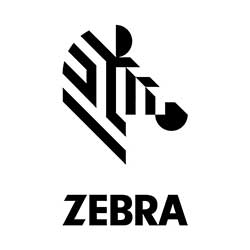
Zebra’s “Your Edge” Blog Team
The “Your Edge” Blog Team is comprised of content curators and editors from Zebra’s Global PR, Thought Leadership and Advocacy team. Our goal is to connect you with the industry experts best-versed on the issues, trends and solutions that impact your business. We will collectively deliver critical news analysis, exclusive insights on the state of your industry, and guidance on how your organization can leverage a number of different proven technology platforms and strategies to capture your edge.
Zebra Developer Blog
Zebra Developer BlogZebra Developer Blog
Are you a Zebra Developer? Find more technical discussions on our Developer Portal blog.
Zebra Story Hub
Zebra Story HubZebra Story Hub
Looking for more expert insights? Visit the Zebra Story Hub for more interviews, news, and industry trend analysis.
Search the Blog
Search the BlogSearch the Blog
Use the below link to search all of our blog posts.
Most Recent
Legal Terms of Use Privacy Policy Supply Chain Transparency
ZEBRA and the stylized Zebra head are trademarks of Zebra Technologies Corp., registered in many jurisdictions worldwide. All other trademarks are the property of their respective owners. ©2025 Zebra Technologies Corp. and/or its affiliates.

